Theory 2
Form Factor F
In the following figures simulated form factors |F(qy,qz)|
![]()

![]() Figure 4: simulated cylindrical form factor (R=5nm; H/R=1)
Figure 4: simulated cylindrical form factor (R=5nm; H/R=1)
![]()

![]() Figure 5: simulated spherical form factor (R=5nm; H/R=2)
Figure 5: simulated spherical form factor (R=5nm; H/R=2)
![]()
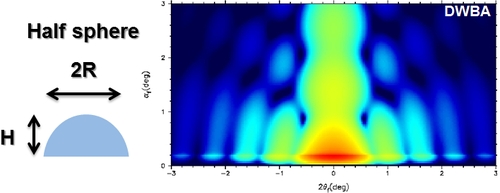
![]() Figure 6: simulated half-spherical form factor (R=5nm; H/R=1)
Figure 6: simulated half-spherical form factor (R=5nm; H/R=1)
![]()

![]() Figure 7: simulated pyramidal form factor (R=5nm; H/R=1; φ= 54.73°)
Figure 7: simulated pyramidal form factor (R=5nm; H/R=1; φ= 54.73°)
Interference Function S (structure factor)
In the case of arranged objects in a 2D-lattice, an interference function S along q
![]()
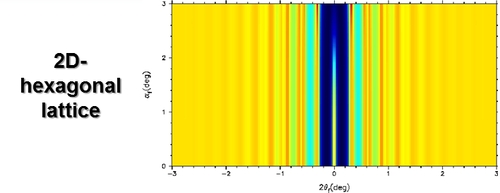
![]() Figure 8: simulated interference function (2Dhex,a=20 nm)
Figure 8: simulated interference function (2Dhex,a=20 nm)
![]()
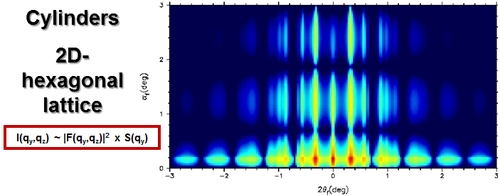
![]() Figure 9:hexagonal arranged cylinders (R=5nm; H/R=1; 2Dhex,a=20 nm)
Figure 9:hexagonal arranged cylinders (R=5nm; H/R=1; 2Dhex,a=20 nm)
The same behaviour is observable in the following figures, which show the resulting scattering patterns for the same arrangement but different form factors:
![]()
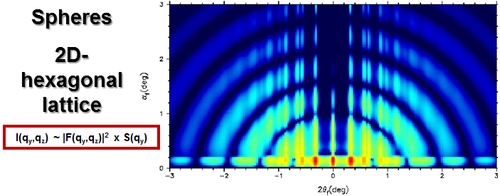
![]() Figure 10:hexagonal arranged spheres (R=5nm; H/R=2; 2Dhex,a=20 nm)
Figure 10:hexagonal arranged spheres (R=5nm; H/R=2; 2Dhex,a=20 nm)
![]()
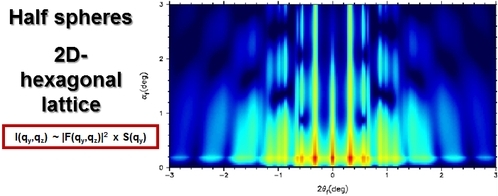
![]() Figure 11:hexagonal arranged half spheres (R=5nm; H/R=1; 2Dhex,a=20 nm)
Figure 11:hexagonal arranged half spheres (R=5nm; H/R=1; 2Dhex,a=20 nm)